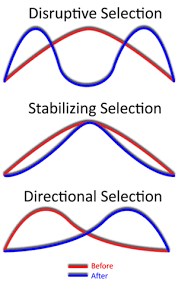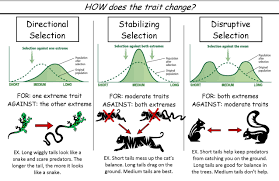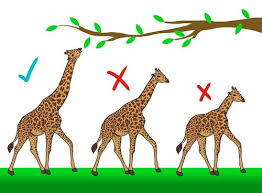the action or process of mutating
mutation
 300 × 478
300 × 478
all types of natural selection
5th step of natural selection
they reproduce,process starts over
the change or difference in condition
variation
who came up with the therory of ¨survival of the fittest¨
darwin finches
the action or process of adapting or being adapted
adaptations

the change of the trait
4th step of natural selection
favorable mutations are more likely to survive
the arrangement of and relations between the parts or elements of something complex
structure
most important agent of evolutionary change simply because it results in adaptation of an organism to its environment
natural selection
the organisms ability to survive and reproduce in a particular environment.
fitness
giraffes get more nutrients from higher vegetations, that trait increases in population over time.
directional selection
1st step of natural selection
mutation creates variation
a trait that enables them to better adapt to there environment, compared to other members of their species that can survive and reproduce.
survival and reproduction
frequency changes across generations
genotype
the continued existence of organisms which are best adapted to their environment with the extinction of others as a concept in the Darwinian theory of evolution.
survival of the fittest
predators cant catch the medium sized lizards (there to fast),you would see less small and more large lizards.
stabilizing selection
2nd step of natural selection
unfavorable mutation selected against
the life of something increases to become bigger
population growth
the process by which different kinds of living organisms are thought to have developed and diversified from earlier forms during the history of the earth.
evolution
the process by which humans use animal breeding and plant breeding to selectively develop particular phenotypic traits .
selective breeding
shells, predators could see the pink shells but not the other two(they were camouflage) the frequency of pink shells increases.
disruptive selection
3rd step of natural selection
reproduction and mutations occur
a thing that is inherited
inheritance

type of the fittest